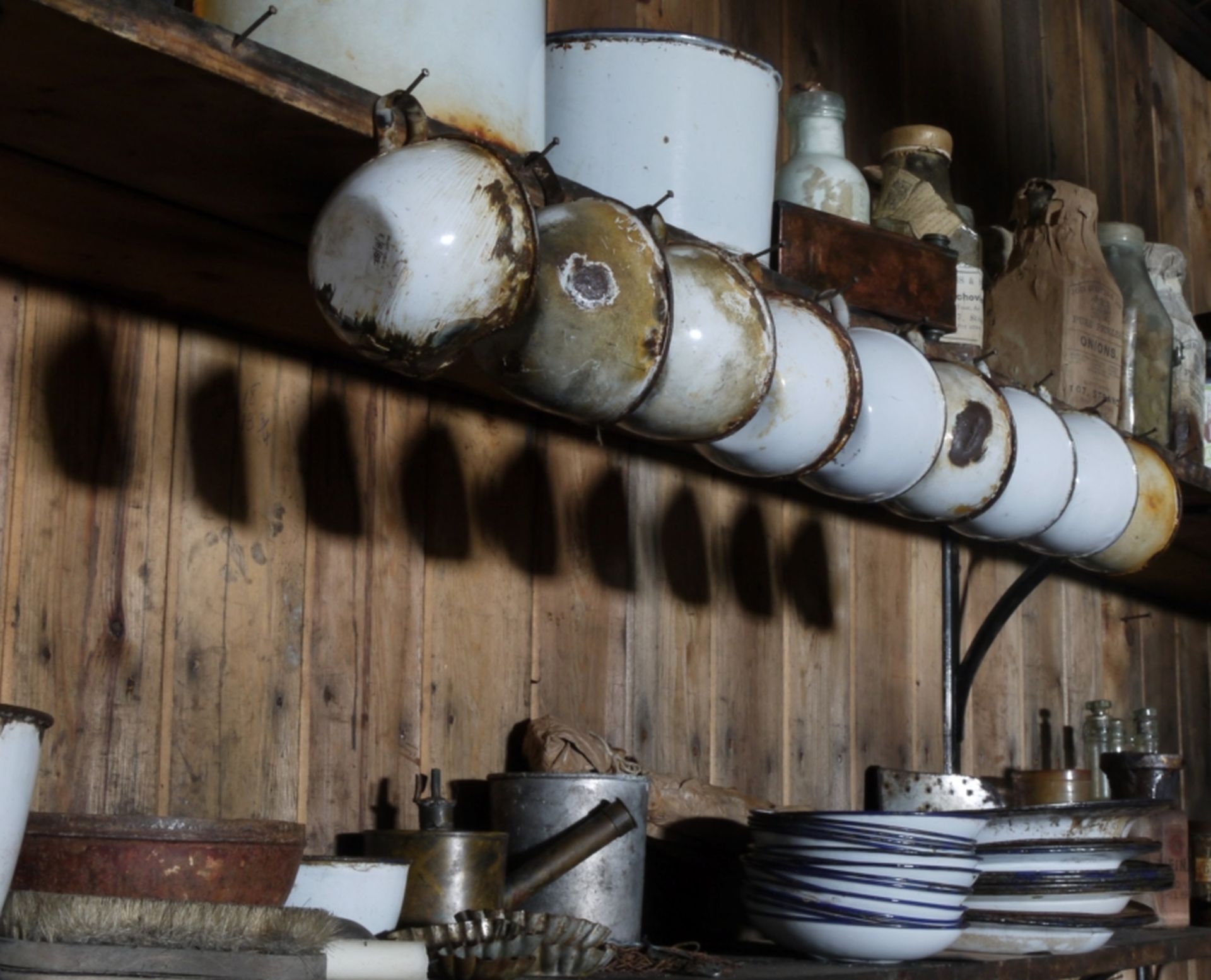Scott’s hut at Cape Evans is the iconic base associated with his heroic attempt for the Geographic South Pole.
Captain Robert Falcon Scott’s British Antarctic (Terra Nova) Expedition 1910–1913 was his second and final attempt at reaching the ‘prize of the day’, the Geographic South Pole.
The hut is the largest of the historic huts in the Ross Sea region and was erected between 4 and 17 January 1911.
The hut is located on the north-west side of Cape Evans, built on a gently sloping beach of volcanic scoria facing Home Beach. Surrounding the hut are several other structures and a large number of stores and other items left by the expeditions.
The structures include the remains of a stone hut built by Cherry-Garrard, the anchors of the Aurora from Shackleton’s Imperial Trans-Antarctic Expedition, the latrine immediately to the north of the hut; the meteorological screen and magnetic hut, and an instrument shelter and memorial cross on Wind Vane Hill.
In 2008 the Trust commenced a comprehensive seven-year conservation programme to save the site. In 2012 the Trust completed a five-year carpentry conservation programme, weatherproofing the building and making it structurally sound. In 2015 the Trust completed the seven-year artefact conservation programme, conserving more than 11,000 artefacts on site. A maintenance fund has been established.
![]()
![]()


